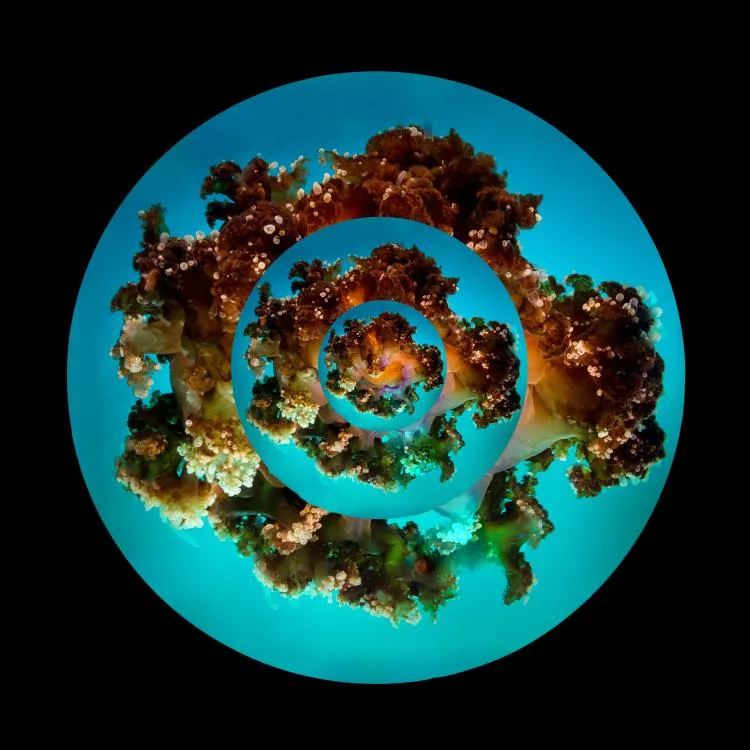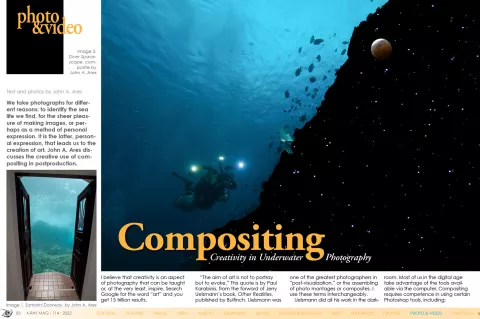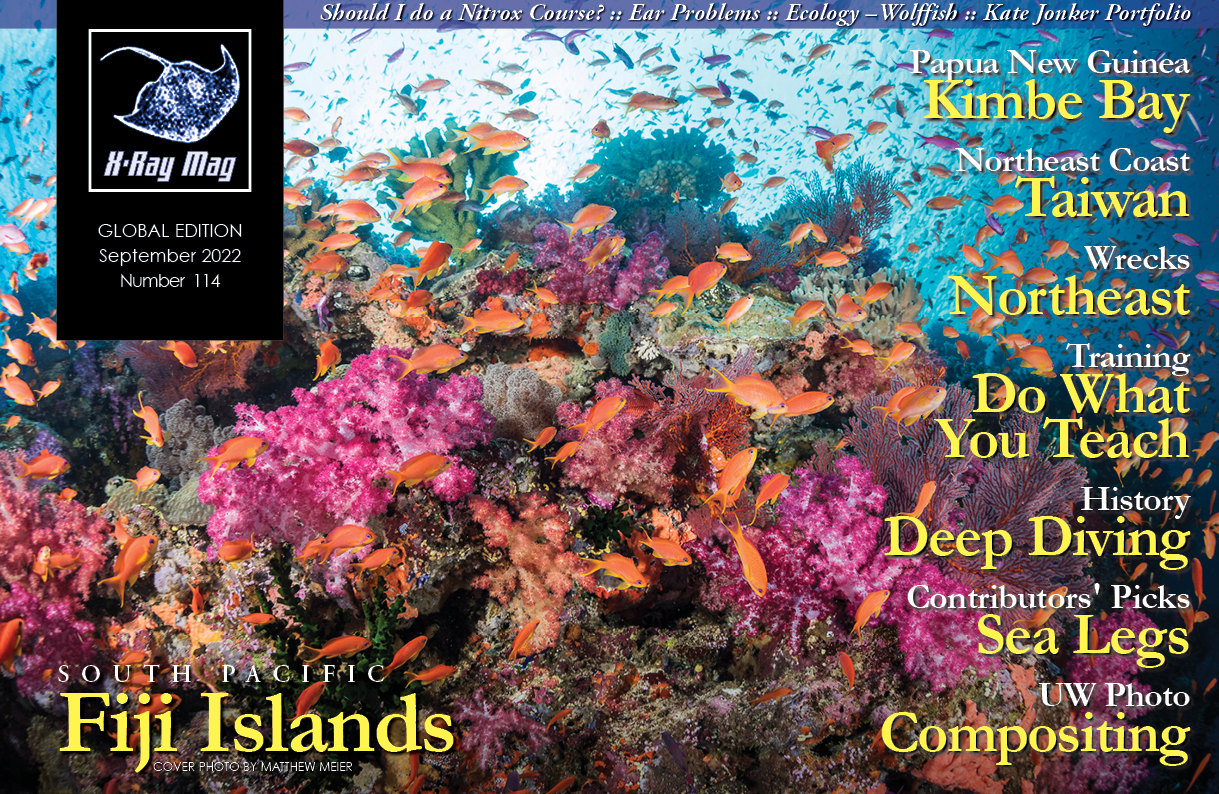We take photographs for different reasons: to identify the sea life we find, for the sheer pleasure of making images, or perhaps as a method of personal expression. It is the latter, personal expression, that leads us to the creation of art. John A. Ares discusses the creative use of compositing in postproduction.
Contributed by
I believe that creativity is an aspect of photography that can be taught or, at the very least, inspire. Search Google for the word “art” and you get 15 trillion results.
“The aim of art is not to portray but to evoke.” This quote is by Paul Karabinis, from the forword of Jerry Uelsmann’s book, Other Realities, published by Bulfinch. Uelsmann was one of the greatest photographers in “post-visualization,” or the assembling of photo montages or composites. I use these terms interchangeably.
Uelsmann did all his work in the darkroom. Most of us in the digital age take advantage of the tools available via the computer. Compositing requires competence in using certain Photoshop tools, including:
• Masking
• Proficiency in working with layers
• Eraser tool
• Cutting shapes like circles
• Rotating selections
• Resizing selections
For more on selections, please see my article, “Selective Color: Creative Effects in Postproduction of Underwater Images,” in issue 110 at: xray-mag.com/content/selective-color-underwater-photo.
Compositing is a creative technique that involves combining images in different ways. One simple method is to visualize a montage that uses only a couple of images. Consider the surreal view out the door into an underwater seascape in Image 1 (previous page).
Image 1. Santorini Doorway
Selecting photos for a composite is not always intuitive. For example, I saw the doorway photo from Santorini, Greece, in my archive and thought, what would it look like if you were looking out into an underwater scene instead of seeing a sky? I then looked for a suitable “seascape” to complement the doorway image.
In selecting images, it helps if you have a good size photo archive. Uelsmann does not shoot for creating a composite; rather, he shoots using a process called “gathering assets.” He shoots photos that contain interesting elements that may find their way into a future composite.
Image 2. Diver Spacescape
Another example of a composite is the image of a diver coming out of the deep. (See Image 2 on the previous page.) To me, the diver in North Sulawesi, Indonesia, looked as if he was in space. The backdrop of the reef on the right side of the image was insignificant, and I thought it needed a “starfield” instead. I had created the starfield for use in another photo and thought it would be appropriate here. (Search Google for “creating a starfield in Photoshop.”)
For the top layer, I inserted a photo I took of a lunar eclipse, to further enhance the feeling of space. I rotated the moon so that it appeared as if the light was coming from the surface.
It was also important to highlight the fish on the border between the two images. The spadefish were getting dark at the border and required a little brightening.
Image 3. Concentric Jellyfish
Another approach to compositing involves repeating a single image. Because of the symmetry, the jellyfish images could be nested inside each additional image. Three concentric images seemed to be a manageable goal. The primary image was placed on a black background and cut into a circle. Two additional copies of the image were then resized accordingly and placed so the images would blend.
Image 4. Tunicate
A variation of compositing involves copying parts of an image and rearranging them multiple times on the photo. For the tunicate image, I thought the glow of the gold ring was intriguing and needed some amplification. I copied, trimmed and resized the gold ring twice to show the ring three times in total.
Final thoughts
There are many creative ways to use one’s own underwater photographs. Letting your imagination run free, finding intriguing associations, and thinking outside the box can lead to interesting artistic composites, in which the whole is indeed greater than the sum of its parts.
REFERENCES:
Uelsmann, J., Bunnell, P.C., KarabInis, P. (2005). Other realities. (1st Edition). Bulfinch.
Lund, J., and Pfiffner, P. (2003). Adobe master class: Photoshop compositing with John Lund. Adobe Press.
Huggins, B., and Probert, I. (2004). Surreal digital photography (One Off). (1st Edition). Cengage Learning PTR.
































